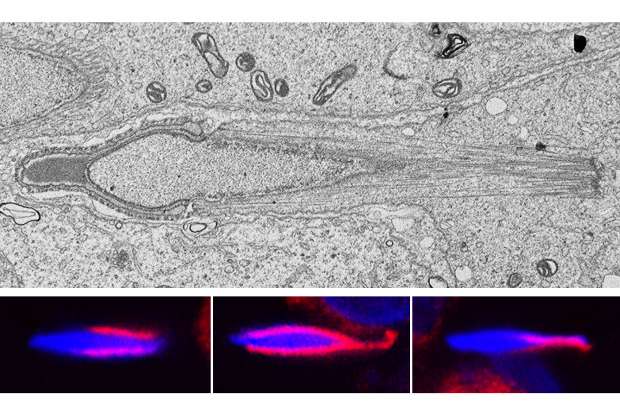Study reveals gene's role in male infertility

A Virginia Commonwealth University-led research team has opened a fresh direction in the field of male infertility with a new study that examines the role of a particular gene in the formation of sperm flagella, which is the appendage that propels sperm.
The paper, "Intraflagellar Transport Protein IFT20 is Essential for Male Fertility and Spermiogenesis in Mice," was published online in Molecular Biology of the Cell. It will be published in a future print issue of the journal. In the paper, researchers studied the role of the intraflagellar transport protein IFT20 in male germ cell development. They learned that the gene was important for sperm flagella formation and therefore male fertility. Without flagella, sperm cannot swim.
"Our studies suggest that IFT20 is essential for male fertility and spermiogenesis in mice, and its major function is to transport cargo proteins for sperm flagella formation," said lead researcher Zhibing Zhang, M.D., Ph.D., associate professor in the Department of Obstetrics and Gynecology in the VCU School of Medicine. "Our study also uncovered a novel genetic factor for male infertility."
In humans, male infertility accounts for 40-50 percent of infertility, and it affects approximately 7 percent of all men. Many different medical conditions and other factors can contribute to fertility problems, but the most common issues that lead to infertility in men are problems that affect how the testicles work. Many of the etiologies are unknown, but this accounts for about 50 percent of patients. Genetic factors are the major issues.
There are two kinds of cilia, motile cilia and primary cilia. Motile cilia are present in sperm, epithelial cells of trachea and brain ventricles; the major function of motile cilia is for motility. Primary cilia are present in almost all the mammalian cells; the cilia in these cells function as sensors and several signal pathways are present in primary cilia.
Intraflagellar transport, which is also known as IFT, is critical to the development of cilia. Defects in cilia result in developmental disorders, diabetes and cancer. There are about 20 IFT genes. The genes are so critical that once they are disrupted globally in mutant mice most of those mice will die before reaching adulthood. The function of IFT genes has been studied in primary cilia, but very few studies have been studied in motile cilia. Even though sperm have the longest motile cilia in any mammalian cells, there are almost no studies in male germ cell development because of embryonic death. Researchers in this study became the first in the world to explore the role of IFT genes using conditional knockout mice.



















